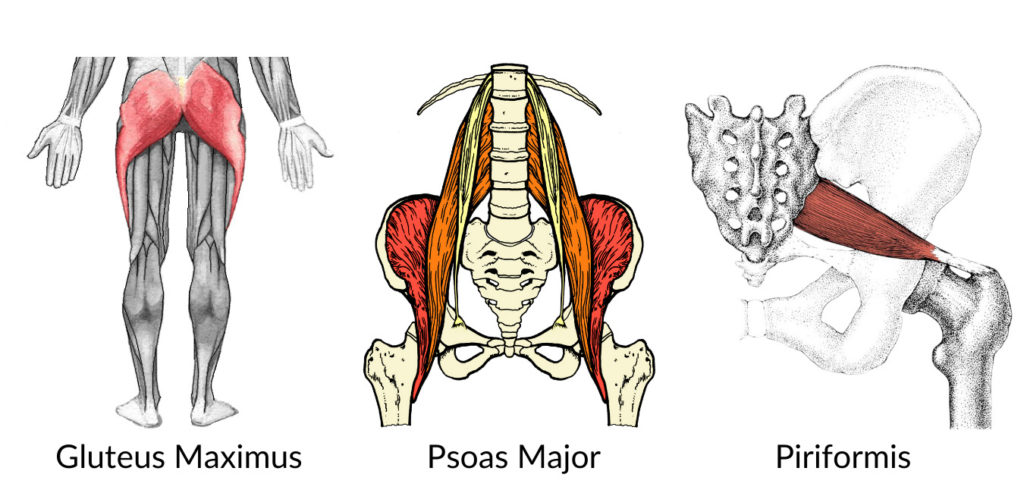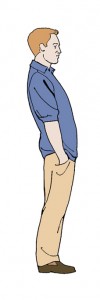It’s All About The Psoas
I have been psoatically obsessed for 15 years— I offer a lot of different workshops— but it always comes back to the psoas.
One of my students a long time ago made me a shirt that read “It’s all about the psoas”.
Considering that I say it over and over again, I couldn’t agree more.
The psoas major muscle is the most important muscle in the body for three reasons.
- It’s the muscle of standing— It’s all about the psoas when it comes to standing upright successfully.
- It’s the muscle of walking— Every successful step we take is initiated through the psoas major.
- And it’s the muscle of pain and trauma— That’s where things get esoteric and fascinating.
When it comes to our bodies, we live in an interesting yet bizarre structure that is both physical and emotional.
The physical is obvious. We are a body made of muscles, bones, and other viscera.
The emotional nature of the structure is that the brain and body are bombarded with stimulus all day, every day, and while we can handle some of that stimulus well, the same doesn’t go for all stimuli.
Add the nuance that some people are more sensitive than others, and as such handle and process situations differently.
When it comes to the psoas affecting both the emotion and physical nature of our beings, degrees of sensitivity are at the root of it all.
- A car accident or fall down downstairs can be a major trauma, though not so much if you are a stunt man in the movies.
- Growing up in a house where you are constantly afraid of a parent or sibling can be emotionally traumatic but it will affect every individual differently.
- Getting mugged
- Something random happens- you get hit by something or someone, and the body is not able to handle that stimulus in that moment.
So how do we deal with these kinds of events?
I believe the way the body deals with things of this nature, is to store that energy that it can’t handle in the psoas muscle.
And that’s nonsense in a lot of ways.
One of my favorite teachers ever was happy to tell me that is nonsense.
“Emotions don’t live in muscles, muscles move the body.”
I have nothing but respect for that teacher, but in my take the psoas really does hold onto energy that the body is not ready to let go of.
That’s exactly why it’s all about the psoas.
The key to all of my work is a belief that our body is always interested in letting go of this unprocessed energy or trauma, but we have to create the environment for the body to do that.
From my perspective, we do that with psoas release exercises.
Before you get to release work you need to understand how the psoas works for you, or in most cases, doesn’t work for you.
It is as simple as this.
The psoas holds you upright. There are only three muscles connecting the upper and lower body.
Psoas major, piriformis, and gluteus Maximus.
These three muscles, piriformis & gluteus maximus at the back and psoas at the front, are essentially holding the spine upright with the head on top of the spine.
When we stand well, we use the psoas well, and we can employ it all through our life.
When we stand well, we’re healing ourselves.
The nature of standing well is a healing action because it aligns the psoas well and lets it start to do its thing.
Old You & New You
This is what I call Old You. This is how I think you stand.
I think you lean backward. That’s what people do in general— thighs forward, upper body backward.
When you stand this way, because of the position of the pelvis, legs, and spine, you’re not using your psoas.
And the simple act of shifting your thighs back employs your psoas.
In the Old You, if you go slightly back, you move into a kind of curve like a parenthesis.
And the main thing is— you don’t use your psoas.
This is New You. When you put the legs under the hips into New You, you employ the psoas.
You allow the psoas to align well, engage correctly, and function as designed, to move you through space along with supporting and stabilizing the spine.
The work I do in regards to the psoas is release work, which is doing very little to accomplish a lot. You lay around doing nothing and you can gain an incredible amount of benefit.
But, to be clear, you could also heal just by standing better and by walking better.
And I’m not saying that you don’t walk well or don’t stand well— but— I don’t think people use their body best.
And when you start using your body better, that’s healing.
The body is a self-healing machine.
Stand well and walk well, and you start to heal the body because the body wants to be aligned well, engaged well, and used well.
And to me, it’s all about the psoas.
If you don’t use the psoas when standing, walking, and even sleeping- which is a whole other thing, it’s very, very hard to get the most out of the body.
If you buy any of what I’m saying— that unprocessed energy, that trauma of all different kinds lives in the body and lives in your psoas— you have to create an environment to let it go.
And you can. You can do that at any time.
But, and this is a big but, the body doesn’t let go until it’s ready, which is fascinating and a whole other topic.
For now, though, believe that you can heal and you can improve the way you stand and the way you walk.
With the exception of nerve damage, we can do so many amazing things to heal the body.



